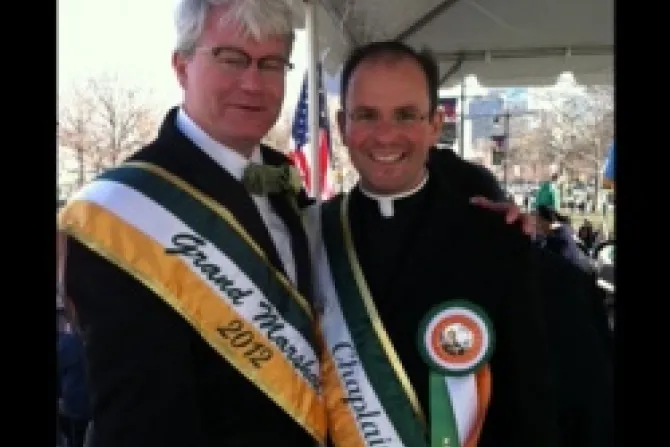Denver, Colorado, Mar 17, 2012 / 09:03 am
As the world celebrates St. Patrick's Day, it's important to remember that the fifth century bishop's feast day means more than an excuse to drink excessively and wear green.
"It's almost embarrassing that we talk about green beer and green sweaters," said Fr. Kevin Gallagher, vocations director for the Archdiocese of Philadelphia and chaplain for the city's annual St. Patrick's Day parade.
"People are getting back to the basics of the life of St. Patrick," and the people he sought to evangelize, Fr. Gallagher told CNA on March 15.
Although St. Patrick lived hundreds of years ago, his mission is still relevant today, especially in light of difficulties the local church is facing.
"In Philadelphia, we're having our challenges economically, but also in the Church with clergy sexual abuse," the priest said.
However, St. Patrick "really gave people hope...he brought them Christ," which is the most important part of the saint's legacy that people need to focus on.
"Are there people who still get drunk? Sure," Rev. Gallagher admitted, but said "that's a sin I don't think takes St. Patrick's Day to happen, not that I don't enjoy a good Guinness..."
As a priest, Rev. Gallagher said he'd like to challenge people not to "celebrate St. Patrick's Day unless you know who you're celebrating."
This year, Rev. Gallagher said, the Irish Catholic community in Philadelphia has been diligent about voicing concerns over "attacks on the life and legacy of St. Patrick."
Retail merchandiser Urban Outfitters, whose headquarters are in Philadelphia, has recently come under fire for selling clothing which stereotypes people of Irish heritage as binge drinkers and St. Patrick as "someone who just brought green and beer to the people of Ireland," Rev. Gallagher said.
"We get nailed with this stuff every year," Mike McCormack, National Historian for the Ancient Order of Hibernians, a charitable organization dedicated to defending Irish culture in America told CNA March 13.
In order to "make sure the next generation doesn't grow up thinking that stuff is funny," McCormack said his organization sponsors scholarships and educational programs to raise awareness about Irish culture.
Along with battling stereotypes, McCormack said the Ancient Order of Hibernians make a strong showing at the world's oldest St. Patrick's Day parade in New York.
"Most people will not realize that the Irish are on 5th Avenue," due to the amount of publicity that the rowdy crowds along the parade route receive, McCormack said.
"The people (who are intoxicated) on the sidelines are not Irish," McCormack asserted, "they may have Irish names...but they know nothing at all about the rich heritage of the Irish."
McCormack pointed out that many St. Patrick's Day parades that still exist today once served as a type of protest march against persecution from native-born "white Anglo-Saxon Protestants."
(Story continues below)
Associate professor of history and Irish history specialist, Dr. Matthew O'Brien of Franciscan University of Steubenville, said that St. Patrick's Day parades are actually an American invention that the Irish adopted as they "became more aware "about the money that comes in from tourism."
Traditionally, the Irish celebrated their patron's feast day, which is a holy day of obligation in Ireland, with mass and perhaps a special dinner.
"I would say that up until 30 or 40 years ago, it was almost entirely a religious holiday" with "relatively little revelry," Dr. O'Brien told CNA March 8.
The parades, which began as a procession to mass on St. Patrick's Day by Irish soldiers in the British Army some time before the American Revolution, have now become a tourist attraction in Ireland.
Last year, Tourism Ireland reported that the 7.3 million overseas visitors who came to celebrate St. Patrick's Day delivered $4.5 billion in new revenue.
This year, in order to promote Ireland to international visitors, Tourism Ireland lit up iconic landmarks, such as the Leaning Tower of Pisa, Niagara Falls, the London Eye and the Sydney Opera House, with the color green.
"Our aim is to capitalize on Ireland's heightened profile this week and to exploit the unique opportunity that is St. Patrick's Day," chief executive of Tourism Ireland, Niall Gibbons said in a Feb. 16 press release.


